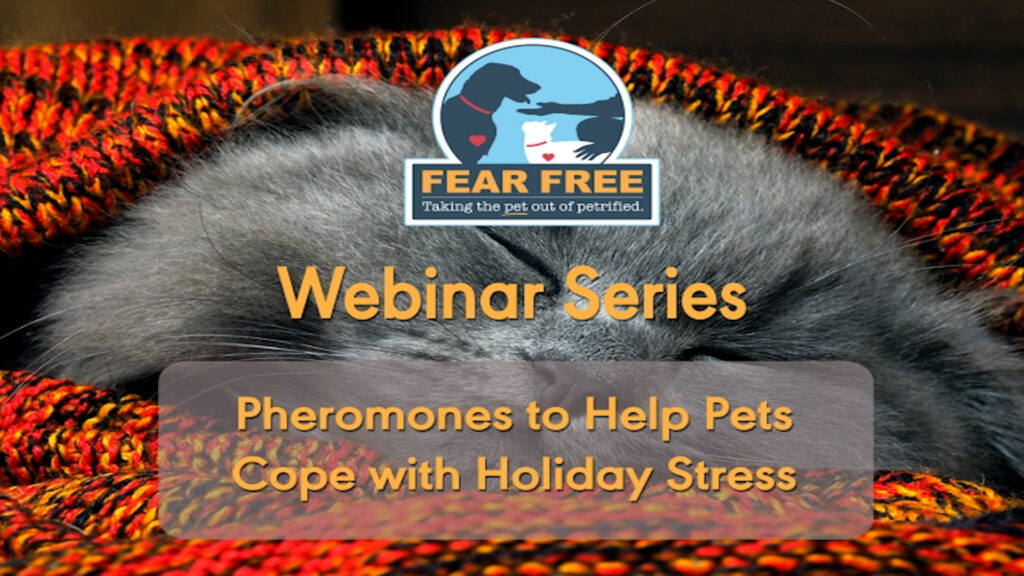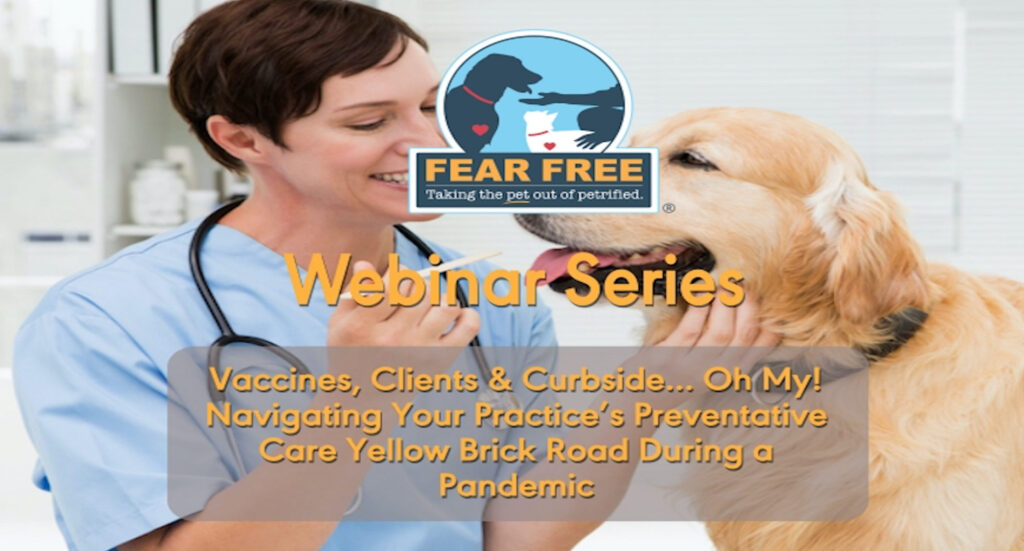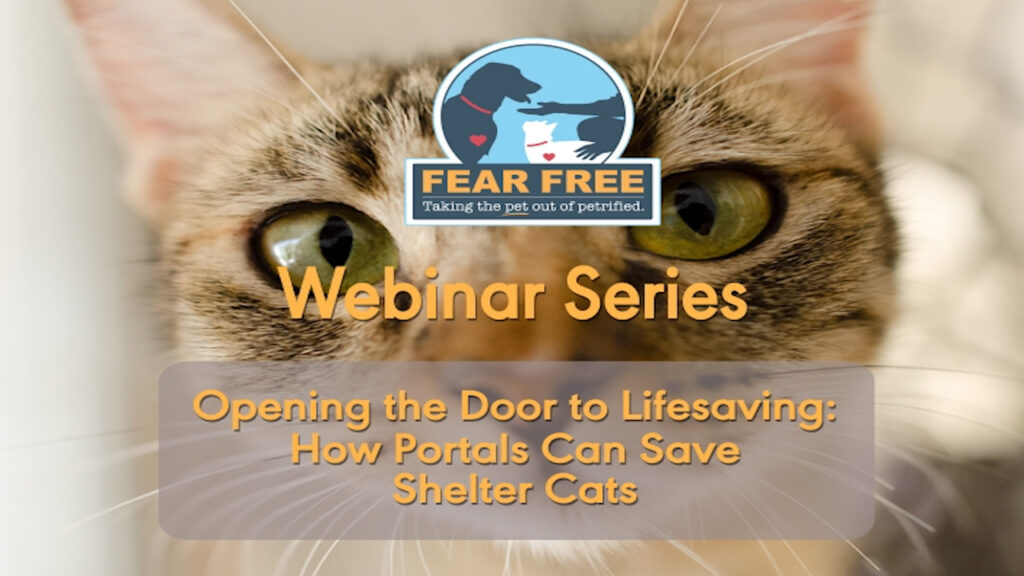Dr. Julie Reck, Owner, Veterinary Medical Center of Fort Mill, Fort Mill, South CarolinaMore than ever, pet owners have a strong bond with their pets. That means they are expecting their pet’s experience at the clinic to be enjoyable. Fear Free provides that excellent “customer” experience for both the pet and the pet owner. However, a client’s first Fear Free experience will likely be different from previous veterinary visits and could seem strange. It is important to ensure that each client fully understands that Fear Free considers both the medical and emotional well-being of their pet and realizes the significance of taking both aspects of the pet’s care into consideration.
Three Key Messages for Our Practice
- We believe in the power of positive reinforcement. Patients will be treated kindly and receive lots of treats and verbal encouragement.
- Fear Free is reinventing the definition of a successful veterinary visit. It is no longer acceptable to “just get it done.” We take into consideration where the patient is emotionally and proceed appropriately, which may mean that some things will not get done during a visit. For example, toenail clipping may have to be done another day if the patient elevates to moderate signs of fear, anxiety, and stress (Level 3 FAS).
- Our hospital has a consistent approach to handling and treating our patients: Everyone is practicing Fear Free techniques with every patient.
Below are tips for successfully communicating the benefits of Fear Free to your clients.
Maximize Your Social Media Presence
Currently I have owners seeking out my clinic specifically for the Fear Free experience, but in the beginning this was not the case. It became obvious to me that the benefits of the Fear Free visit needed to be stated clearly in all my communications.
For the pet owner, the Fear Free journey begins before they get to the clinic. I want my clients to be educated consumers, so they “know before they go,” or, in other words, they know what to expect when they arrive at my clinic. My website and my clinic’s Facebook page fully communicate this to pet owners. We take a proactive approach to prepare the client for a positive experience. This includes stating our philosophy on what a good veterinary experience looks like for the pet and the pet owner using videos, testimonials, news feeds, or stories to keep pet owners informed and prepared for that great Fear Free experience.
The Customer Service Representative (CSR) Prepares the Client and Pet for the Visit
Our CSRs are the next line of communication. They are trained to answer any questions about Fear Free and are critical in making sure that the pet arrives safely and prepared for the visit.
Safety includes recommending that the pet is either in a carrier or harnessed/seat belted while in the car, and that they have a collar and leash if walked into the clinic or stay in the carrier until in the exam room. The carrier can provide the pet a sense of comfort.
Being “prepared” for the visit means making sure the pet arrives hungry and that we have their favorite treat ready for them when they arrive. A day or two before the visit, we send the owner a reminder email and/or text with these same instructions.
Continuing to Communicate During the Examination
The examination provides an opportunity to have a conversation with the pet owner, allowing them to feel more involved with the entire process. I will explain what I am doing, such as standing behind the patient instead of examining their head and face first. I will also describe the patient’s emotional status based on the patient’s body language and my physical findings. This prepares the owner for any diagnostic and/or treatment recommendations that I make, and they are more likely to be compliant with my plan.
Additionally, if the patient’s level of FAS does not allow the completion of the exam or planned procedures, such as nail clipping, the client will be more likely to understand because of the ongoing conversation about the patient’s behavior and emotional status.
It is also important that the pet owner understands their pet’s level of fear, anxiety, and stress will change, based on the situation. A dog who typically loves coming to the clinic may behave differently when coming in for examination and treatment of a painful ear infection. Where we may have never needed to sedate in the past, it is necessary now to ensure that the patient had the best possible experience because the dog’s pain has exacerbated his level of fear.
For patients with a history of severe veterinary visit FAS who we are seeing for the first time, we will inform the pet owner that the first visit will be a consultation. We take the patient’s history, perform a visual examination, but forgo the physical examination to keep the FAS level as low as possible. We may prescribe PVPs and/or schedule a series of “Happy Visits” where the patient arrives, receives treats, then leaves before we ever get to the hands-on physical exam.
What About the Client Who Fails to See the Benefits of Fear Free?
For clients who are more interested in “just getting it done,” I will inform them that the goal is to consider the long-term emotional wellbeing of their pet rather than the short-term approach of “just getting it done.” Some clients will understand and comply. For those who do not, we will agree to disagree and part ways.
It is important that the clinic owner and staff back this decision and uphold the values the Fear Free team has agreed upon. This is especially true if the pet owner is loud and unpleasant. Professional affirmation for the decision and support from colleagues can reinforce that one negative encounter with a client cannot undermine all the positive feedback and improved patient outcomes that comes with being Fear Free.
I have found that it is the small consistent changes that accumulate over time that get you to Fear Free. You might start with pheromones and see a subtle difference, then add in Considerate Approach and Gentle Restraint with liberal use of treats and see more of a change. As you continue to master the techniques and communicate the benefits of Fear Free, you will find that you and your staff are emotionally enriched, your clients have a renewed feeling of trust and bonding to you, and your clinic and your patients are actually happy to see you!
 Sponsored by our friends at Zoetis Petcare. NA-02292
Sponsored by our friends at Zoetis Petcare. NA-02292









